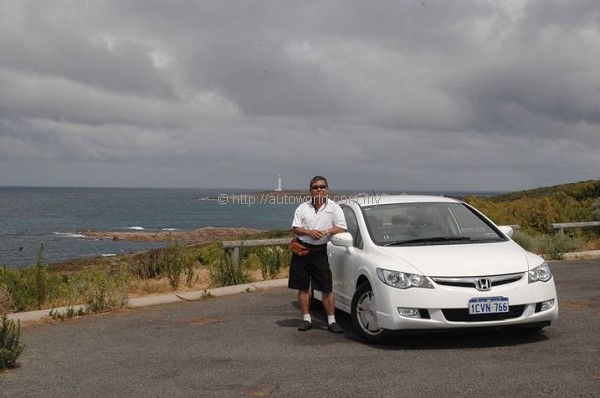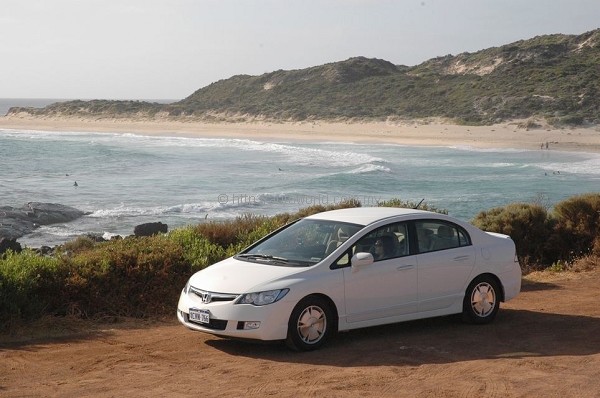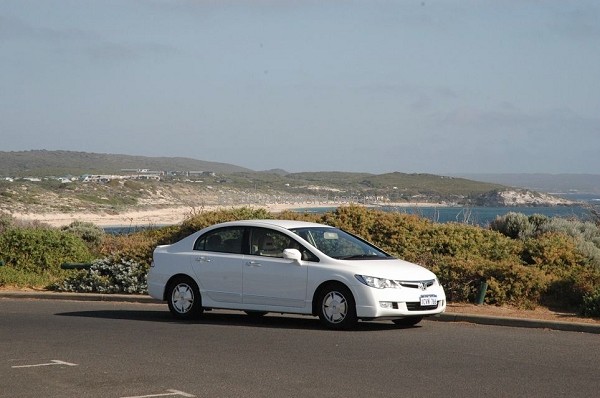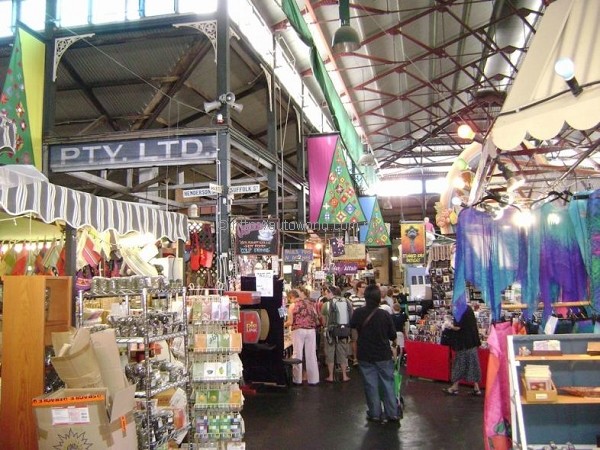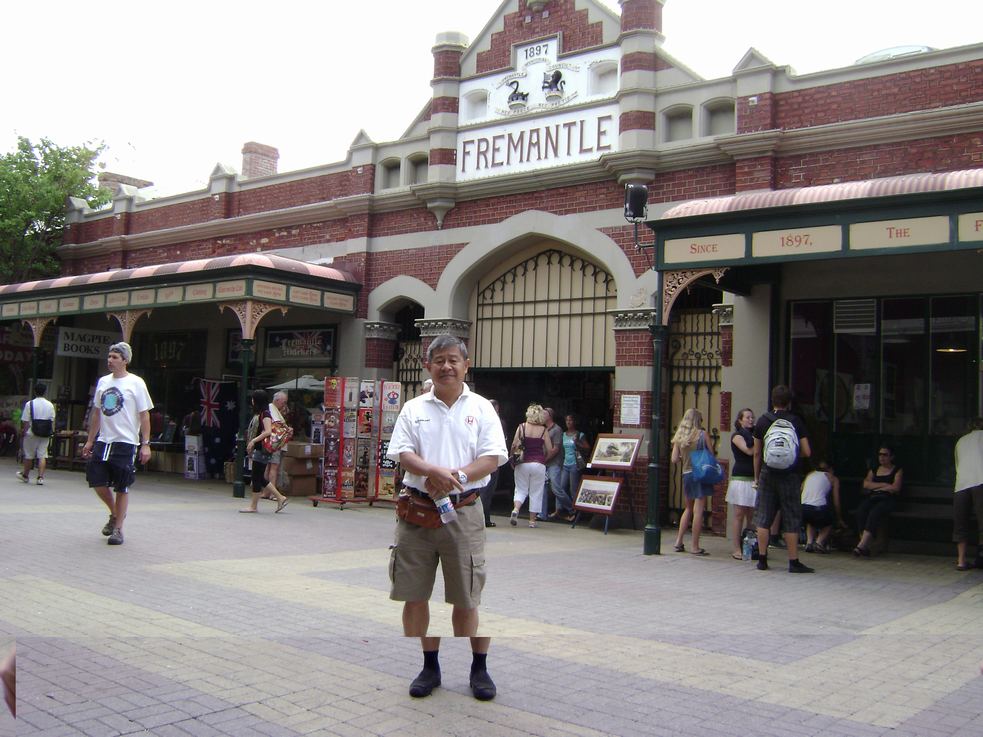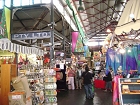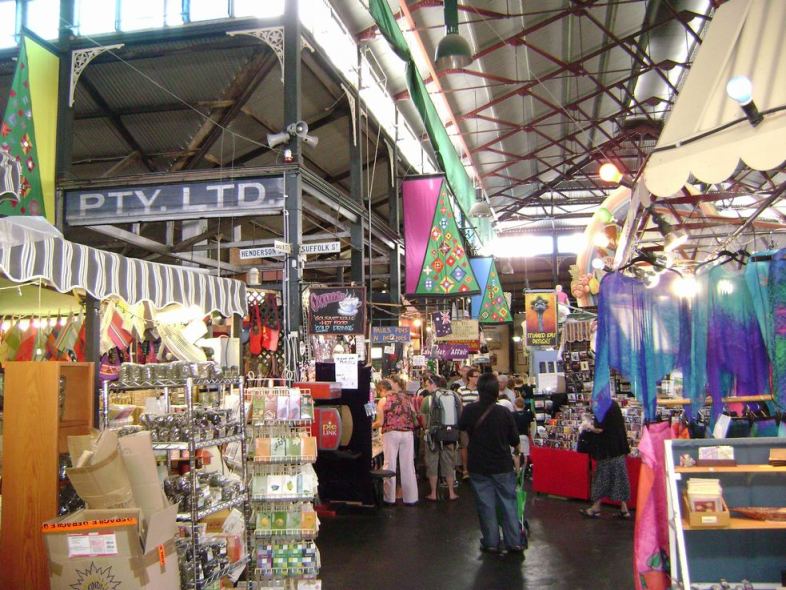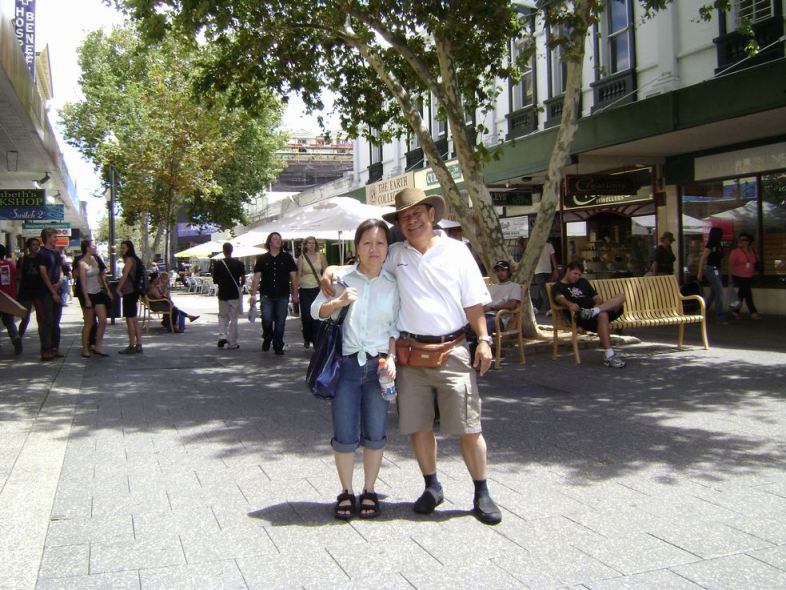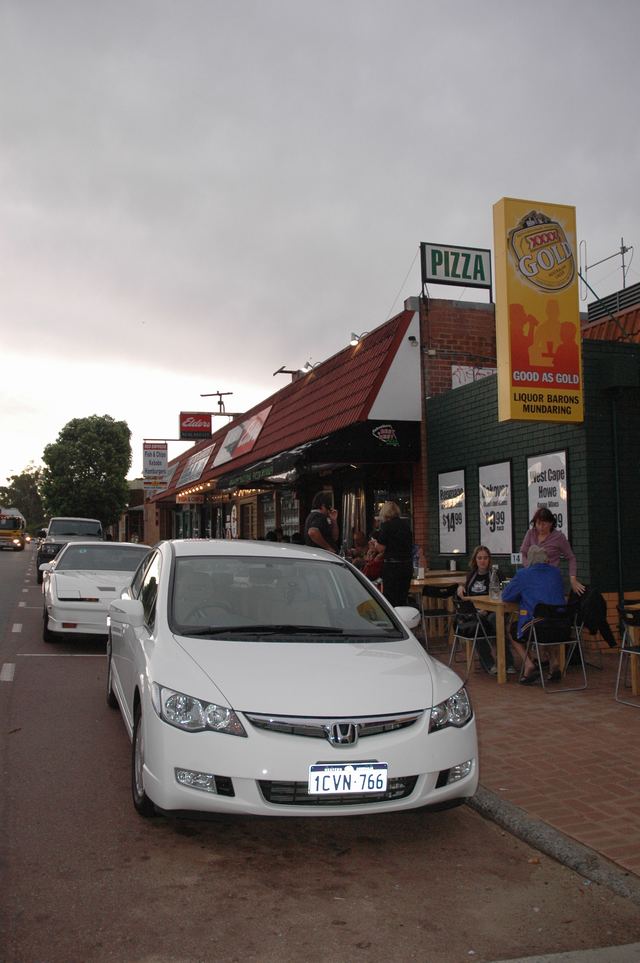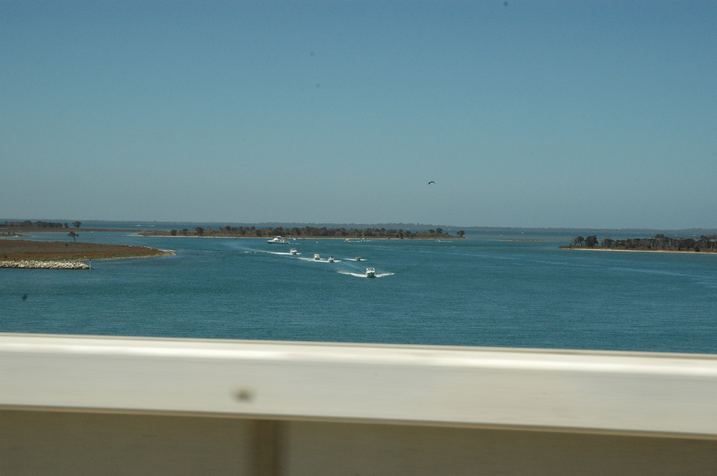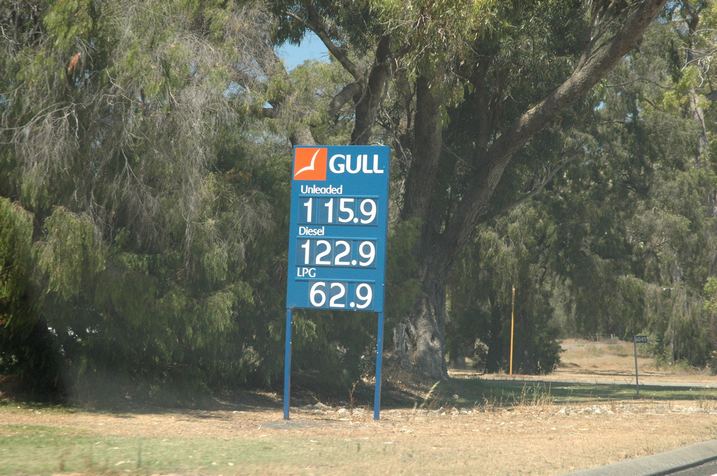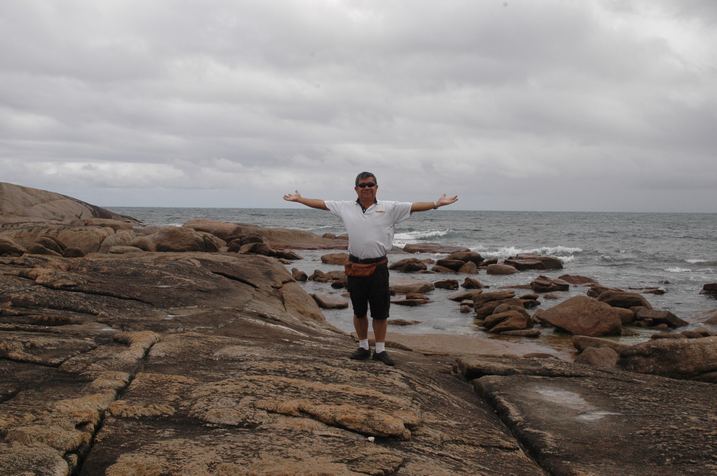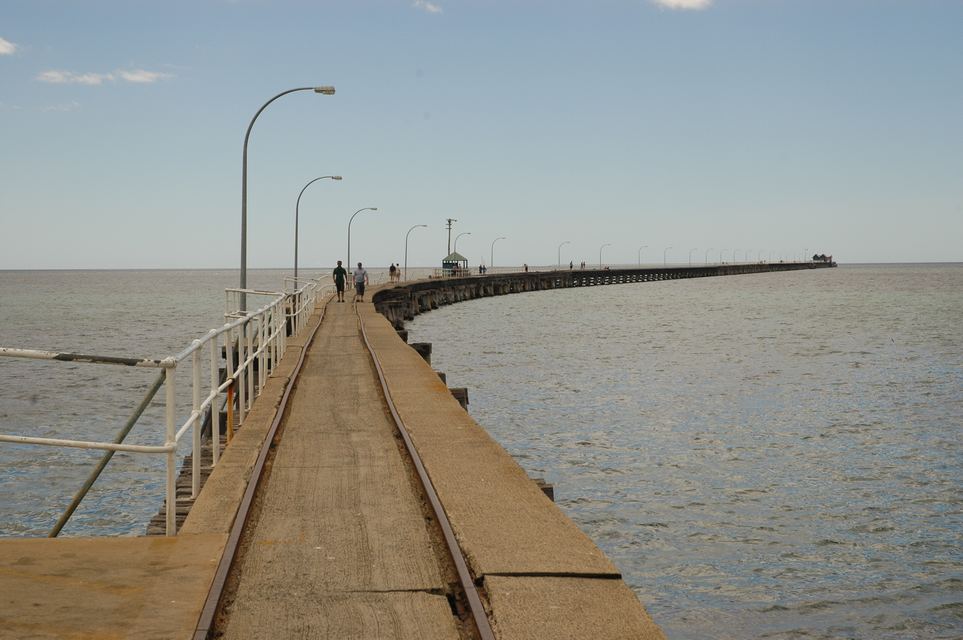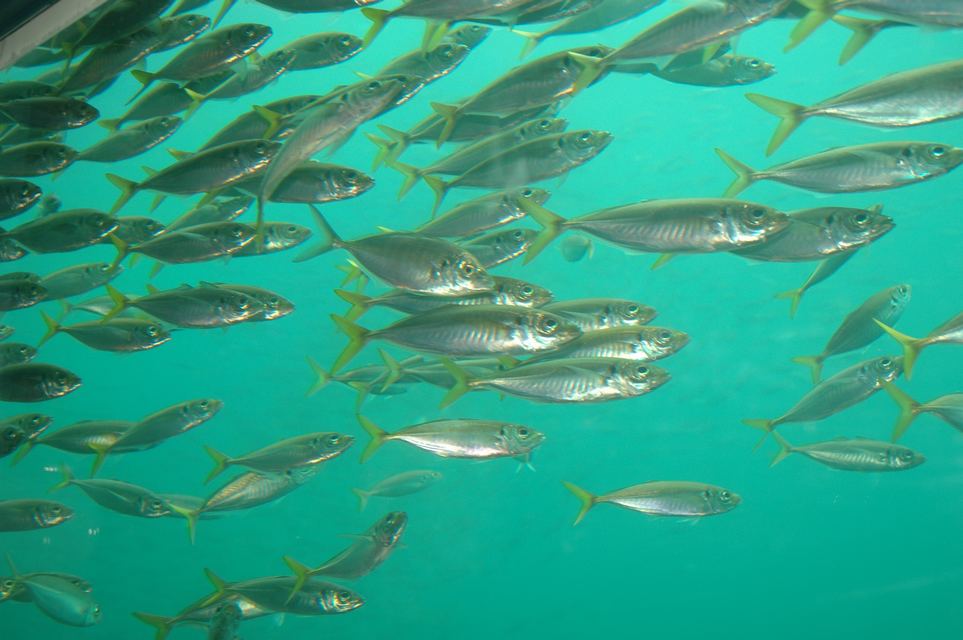Down Under With The Honda Civic Hybrid
It was a holiday to Perth, one that I had promised myself and my wife a long time ago, and this time it was for real. But being the workaholic that I am, I asked Honda for a car to review while I was there, and they obliged with a Civic Hybrid. How nice: I got the use of a car for the duration, and also got my ‘fix’ at the same time.
It was a hot summer’s day in the middle of February that we arrived in Perth; 36 t o40 degrees Celsius was the order of the day; the funny thing is, you sweat, but you don’t get wet. Your sweat evaporates faster than you can perspire and the low humidity absorbs any fluid very quickly. The low humidity is also a reason why wooden houses and structures last so much longer in Australia than in back home; and also why you can leave a loaf of bread in the open and it won’t go stale for days.
Anyway, the sun burns your skin in no time at all, and the dry conditions will make your lips and your skin crack. You also need a pair of ‘sunnies’, the Aussie term for sunglasses, or else your eyes will be affected by the glare. The trick is to stay out of the sun as much as possible; in areas where there is shade, it is a lot cooler. In the evenings, the temperature drops about ten to fifteen degrees, depending on where you are, so it is wise to bring a light jacket along with you, even if the sun is shining hot.
Some of my friends had told me that if I wanted to spend more than three days in Western Australia, I had to get out of the city of Perth, because after three days, there is nothing left to visit, and that includes the suburb of Freemantle, about half an hour’s drive away. Well, my friends will be glad to know that Perth has grown quite big now, and there are enough sights to see and things to do that will take maybe up to six days, depending on what interests you. However, we had nine days to kill, so we took a long drive down further south to Albany to take in the sights and look at the point where two oceans, the Indian Ocean and the Pacific Ocean, meet.
The first three days were spent in Perth, with a trip to the Freemantle market; after all the talk I have heard about it, it was actually quite small, and if you can get through it in about an hour or so. Here you can pick up trinkets, little soft toys, fruits and vegetables, and souvenirs from Australia. Be careful though, and check the origin of the stuff you buy. Many items that seem Australian, such as koala bears, kangaroos, wombats, and such are actually made in China. One trader selling miniature decorative guitars proudly proclaimed that they were made in Malaysia! I tried to ask him where exactly they were made, but he replied, “If I tell you, I’d have to kill ya!” jokingly of course.
I had always wanted an Australian hat, and nineteen years ago, when I went to Australia, the most famous brand was the Akubra. At that time it was around AUD 40 for one, and I didn’t buy it. This time, I couldn’t find one; the girl at the hat shop said that they are more expensive now, and not many people buy them anymore on account of the high price. I bought another brand, Jackaroo, for AUD 40 instead.
Freemantle is on the western coast, and is a port. Other than the market, you can take a drive along the scenic coastline, go surfing, or swim in the beautiful blue waters of the Indian Ocean. The water is crystal clear, and you don’t see plastic bottles and other rubbish floating in the water. The Australian government is very particular about keeping all things natural, and the people there are a very civic-conscious lot. We had an enjoyable afternoon sitting in a park by the beach, enjoying the cool breeze, and watching the gulls play in the wind.
Another interesting place in the suburbs is Hilary’s Harbour, where there is a boat marina, and a public beach. Here, there are many curio shops for browsing in, and food outlets. The chilli mussels here in an Italian bistro are great. You can stroll along the boardwalk and see the fish swimming in the clear waters.
One of the focal points in Perth is the Burswood Casino, where high rollers from all over the world gather, and place individual bets in amounts that some of us take years just to earn. Around the complex, there are various entertainment and dining spots; we had dinner in a Western food restaurant called Victoria Station (no relationship to the Victoria Station). I now have bragging rights to having tasted a Wagyu Steak, costing AUD 98.00 for 200 grams. The Wagyu beef is very tender, and is reputed to come from cows that are constantly massaged, and are fed on a special diet. At night, you can get a great view of the city from King’s Park, a botanical lung on a hill in the heart of Perth.
A drive of about 60 kilometres inland from Perth to Little Caesar’s Pizzaria is worth it, as it serves world award-winning pizza in all kinds of flavours. Up north, at Hillary’s Harbour, there is a boat marina and a shopping centre also worth a visit.
What is a trip to Perth without going to the wine country of Margaret River? So we packed a couple of small bags, and headed south, where it was slightly cooler, out of the 36 degree (C) dry heat of the Western Australian summer, to look at the wineries and grapevines that splatter across the countryside. Not being wine connoisseurs, we didn’t actually do any wine tasting, as we thought it would not be in good taste to sample wines and not buy any. Anyway, my Australian friend who came along said that she had been to one of the wineries, and bought some of the wine there, only to find that her neighbourhood ‘bottle shop’ (a place that sells liquor) actually sold the same wine for AUD 5 less.
Nevertheless, the scenery is awesome down south; beautiful rolling hills and dales, huge forests, farms, and cows, and at certain places when we are near the sea, beautiful stretches of sandy bays, inlets, and rivers with clear, flowing water. Along the way, there are many tourist attractions, including a cave where mammoth fossils can be seen. I did not see any speed traps, and very few police cars, but that didn’t mean they are not around. However, if I had been speeding, I am sure that they would have popped out of the shrubbery and pulled me over. Speeding fines are between UAD 100 to AUD300.
Driving in Australia – it is very different from what we are used to here. You don’t use your horn here because it is considered very rude; you are allowed to flash your headlights in warning or if you want to overtake, and you must use your signal lights if you need to change lanes. The police take speed infringements very seriously, and speed cameras are everywhere. The speed limits are automatically 50 km/h in populated areas, which include small villages, and they gradually increase it up to a maximum of 110 km/h in the rural areas. On highways and ring roads, the typical speed limit is 100 km/h. What this means is that if you like to drive fast, Australia is not the place for you.
I drove for close to 2,000 kilometres in Western Australia, and spent most of the time driving very carefully within the speed limits, except for a couple of occasions when I exceeded the limit in momentary lapses of concentration. Which is just as well; the Honda Civic Hybrid seemed to go on forever, and 40.06 litres of unleaded fuel took us 698.3 kilometres. Unleaded fuel costs between AUD 1.19 to AUD 1.35 (unleaded premium costs about 20 percent more), and based on the current exchange rate of around RM2.45 to AUD 1.00, it pays to drive frugally.
The Honda Hybrid engine is a 1.3 litre engine with an electric motor attached to it. This electric motor is also a generator, and it generates electricity when you are coasting on negative throttle, or when you are braking. Located behind the rear seats is a bank of batteries that store up the regenerated energy. Under acceleration conditions, the Hybrid system unleashes this saved energy to help propel the car, and when you come to a stop at a traffic light, the engine switches off. If your air-conditioner is in operation, the batteries take over the air-conditioning when you are stopped, as long as your foot brake in depressed. Take your foot off, and the engine restarts itself.
Having a small capacity engine, an electric motor that uses regenerated energy to help move the car along, and a system that regenerates energy all add up to make the Hybrid an extremely economical car. My second tank of fuel took me about 600 kilometres before I had to refuel, due to a little more exuberant driving. The hybrid system does help to conserve fuel, but in order to reap maximum benefit from the system, individual driving styles must change to a more unhurried pace of travel, and light acceleration.
My Australian friends were quite amazed at the distance we could travel in the Civic Hybrid. It just kept on going for kilometre after kilometre; something not surprising to me, seeing as most of the Aussies own gas-guzzling V-sixes and V-eights. Of course the only excitement you are likely to get from the Civic Hybrid is its fuel economy, which not only makes a great conversation topic, but allows you to keep your money in your wallet longer. The V-sixes and the V-eights will eat the hybrid in terms of power and acceleration, but only the Civic Hybrid gives you bragging rights about saving the environment.
In the final analysis, the Honda Civic Hybrid is a good car for those who want to help conserve the environment. The low emission level and the energy re-generation system help to conserve energy, and save on fuel costs. However, the driver must want to drive economically to make the Hybrid system work at maximum efficiency. Coincidentally, Honda Malaysia has just introduced the Honda Civic Hybrid, and it is available for just under RM130k.




